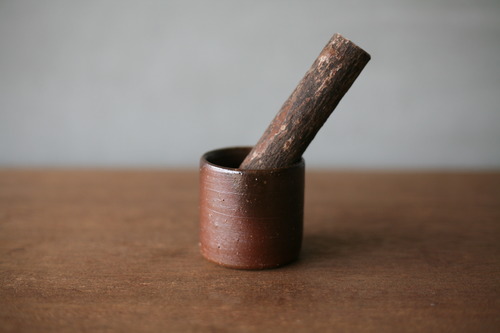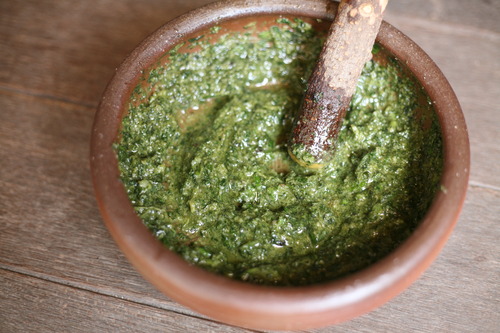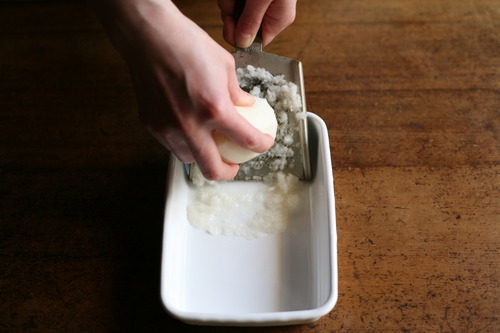


Do you have a mortar?
In Japan, a mortar is a cooking tool that originally developed from a mill in the Taisho era. Throughout human history there has been the use of fire, tools, and language. The use of stone mill enabled people to eat nuts and grains, and cooking methods became more diverse. In Japan, stone mills called "ishizara," which look like inkstones, have been excavated from Jomon-era sites.
There are two types of mills: a "burstone mill" for smashing and a "stamp mill" for grinding. Wooden mills and pestles were common in every household, used to polish rice, make rice cakes, and produce udon, soba, and kinako with a stone mill. While the mill was gradually changing to milling machine from the end of the Taisho era to the beginning of the Showa era, mill was revived around 1945 due to food shortages caused by the war. At that time, in urban areas, they used a single bottle and even refined it. In the era of rapid economic growth, flour milling was mechanized, and today it is still used to make rice cakes for New Year's celebrations. Manual mills are not lost, with stone plates used in India for grinding spices and other ingredients, stone mortars in Thailand, and small ceramic mills, such as the spice mill at Ichiyougama.
And as companions to the mortar, there is the mortar and grater. The prototype of the mortar is said to have been found in China during the Song dynasty, but in the Kamakura period, a mortar with a groove engraved with a comb-like pattern of Bizen ware was found. Miso was made by mashing soybeans with a mortar and pestle, and miso soup was made by grinding miso in a mortar and grinding and straining it. Today, miso is generally made by straining miso, and the process of grinding miso in a mortar and pestle at home has been eliminated.
The Ichiyougama mortar is a Bizen ware, which is the beginning of the combed mortar. Known as "a mortar that does not crack even if thrown," Bizen ware mortar is baked at a high temperature of over 1200 degrees Celsius for about two weeks without glaze, which makes it very strong.
Spring is gradually coming. A recommended mortar dish to enjoy the season is "Bamboo Shoots with Leaf Bud." Grated sansho shoots are mixed with white miso paste and soup stock, and boiled bamboo shoots are dressed with the mixture. If you see bamboo shoots as slow food in the daily cooking tools of common people for centuries, please enjoy the taste of spring.
Ichiyougama's Spice Mill
https://www.shokunin.com/en/ichiyou/spice.html
Ichiyougama's Mortar
https://www.shokunin.com/en/ichiyou/suribachi.html
Oya Seisakusho's Copper Grater
https://www.shokunin.com/en/oya/
References
"Mono to ningen no bunka shi 25 Usu" by Miwa Shigeo
https://ja.wikipedia.org/wiki/すり鉢
https://kinarino.jp/cat4-グルメ/36909-和洋中を楽しめる%E3%80%82すりごまだけじゃない!「すり鉢」で自家製ダレ・ソース作り